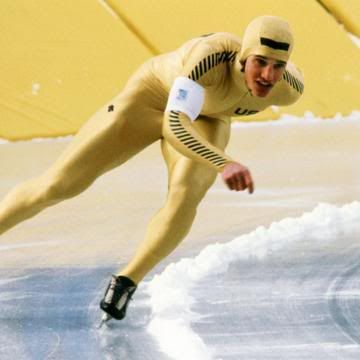Feature Article
Heart Breaker

If you're reading this, you have a heart rate (HR) and a resting heart rate (RHR) and a maximum heart rate (MHR). (Unless the
Zombie Apocalypse has happened, in which case
you might not have a heart rate--or a heart--but then you'd be wasting your time reading this instead of searching for brains.) Traditionally, the heart rate was checked
manually using fingers on the wrist or neck (pulse) or with a stethoscope. In the 1980s, a Finnish company named
Polar Electro (better known simply as "Polar")
began marketing wireless heart monitors and in the fitness training field, that changed everything.
With a convenient way to get accurate, real-time heart rate information, lots of studies considered the relationship between HR and training effectiveness. This led
to the popular use of "training zones" to achieve different effects. You'll commonly see
four zones that look something like this:
- Moderate
- Aerobic
- Anaerobic
- Maximum

You can find other examples with
three
or
five zones, but they all use the same general idea, which is
that each zone corresponds to a percentage range of your MHR
(or a function thereof, such as Heart Rate Reserve [HRR] which is MHR-RHR). For example, 70-80% of your MHR is often considered to be the "aerobic" zone where
the aerobic energy system is primarily used, while 60-70% is often considered to be the "fat-burning" zone because your body will rely largely on fat stores
for energy rather than glycogen. (Don't get hung up on the fat-burning zone concept: there are faster ways to burn it.)
There are many variations on these zones, and some justifiable skepticism as to their value, but here's the main thing: the method most commonly used to determine
the MHR is usually wrong. And if you have the wrong MHR, the zones are kind of useless.
Where does this mostly-wrong MHR come from? A simple formula that you've probably seen:
220 - age. That's it! So simple! And yet it's ubiquitous. It was on the wall
in my ex-physical therapist's office. It's on all sorts of medical sites. It's even on tests for personal trainer certification. But it turns out this formula was
not based on any studies, but on observation of a small data sample by Dr. William Haskell and Dr. Samuel Fox back in 1970. They never intended it to become any kind of
standard used in training. Much of that can be attributed to Polar and other training equipment manufacturers who wanted something simple people could use to make
their equipment seem to be more scientific.

If you're fortunate enough to be above a certain age, you probably remember
Eric Heiden as the golden boy
who won five individual gold medals at the 1980 Winter
Olympics (while setting one world and four Olympic records). He subsequently became Eric Heiden, M.D. and worked with athletes, primarily cyclists. He also
co-wrote a book
Faster, Better, Stronger with Max Testa, M.D. The book includes discussions about
heart rate zones, but also includes this analysis of the Haskell and Fox MHR (or HRM) calculation:
Medically speaking, the 220-age formula has a standard deviation of 12 beats/min (bpm). That means that over 60 percent of the people in the same age group have an
HRM within 24 bpm of one another, and 95 percent of them are within 48 bpm. That means that over half of the forty-five-year-olds, for example, will actually have a
maximum heart rate that is anywhere from 163 to 187, but they will all base their training on a maximum heart rate of 175. And almost all of these forty-five-year-olds
will actually have heart rates of 151-199, but, again, they will all be doggedly training in zones based on an HRM of 175. This tells you that the mean value of the
HRM for all the subjects of the same age is not precise enough to be used for individualized training intensity assessment.
That's what I was going to say! Anyway, if you're like me and have routinely exceeded your supposed MHR, you're not a freak. (At least, not based on this.) The formula
just doesn't work for you, as it won't for most people. Oh, and just because I've actually heard people ask about this, no, your heart won't explode by trying to
exceed your MHR. You'll just get tired and slow down.
There are
other formulae for estimating MHR that are better than this one, but the only way
to find out for sure is with a stress test. It won't take long, but it will suck. Just letting you know.
Anyway, there's another way to gauge the intensity of your workouts that is arguably better than any heart rate zone method can ever be. For that, you'll have to
come back next time!
Be seeing you.
-gary